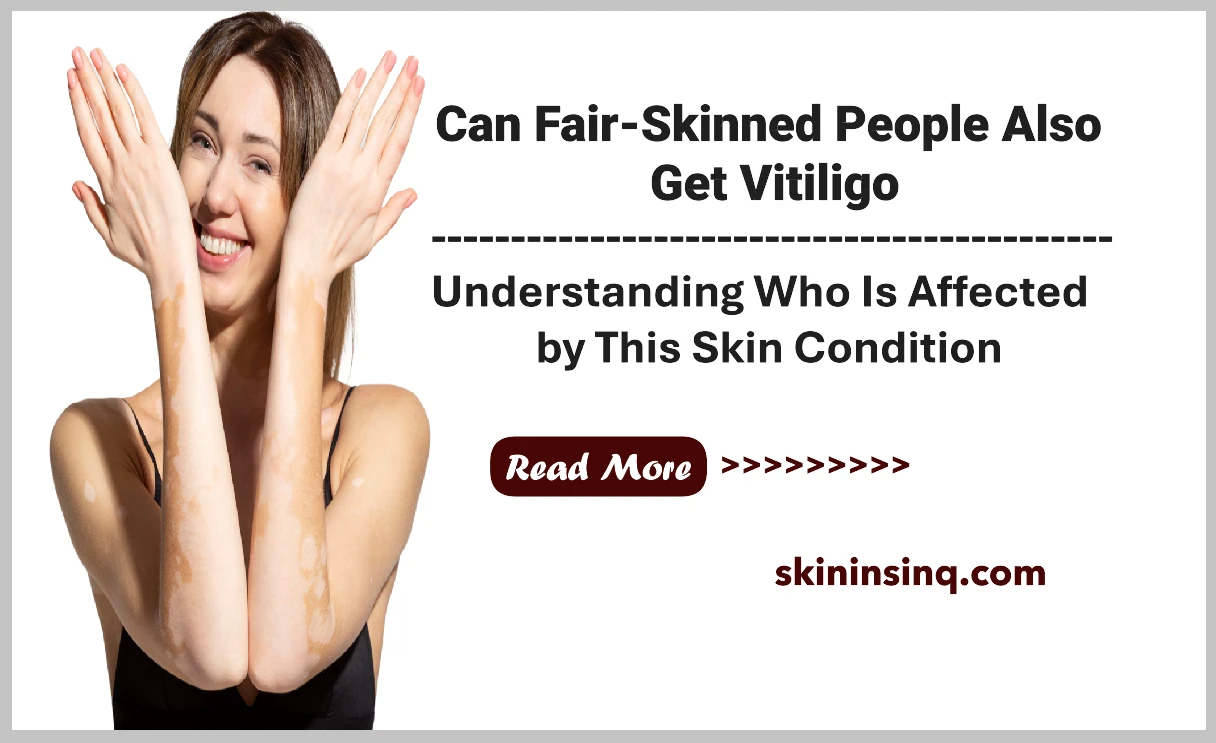Can Fair-Skinned People Also Get Vitiligo? Understanding Who Is Affected by This Skin Condition
Can Fair-Skinned People Also Get Vitiligo? Understanding Who Is Affected by This Skin Condition
Vitiligo is a skin condition that causes the loss of pigment, resulting in white or depigmented patches on the skin. It occurs when melanocytes—the cells responsible for producing melanin—are destroyed or stop functioning. A common misconception is that vitiligo primarily affects people with darker skin tones. While it may be more visually noticeable in those with deeper pigmentation, vitiligo can affect individuals of any skin color, including those who are fair-skinned.
Yes, Fair-Skinned People Can Get Vitiligo
Vitiligo does not discriminate by skin tone. It occurs in people of all racial and ethnic backgrounds, including those with very light or pale skin. However, because the contrast between normal and depigmented skin is less dramatic in fair-skinned individuals, vitiligo patches may be less visible—especially without sun exposure. This sometimes leads to delayed diagnosis or underreporting in lighter-skinned populations.
Why Vitiligo May Seem More Common in Darker Skin
In people with darker skin tones, the contrast between normal pigmented skin and depigmented patches is more prominent. This visibility often leads to earlier detection, more frequent reporting, and a stronger social or cultural focus on the condition. In contrast, in fair-skinned individuals, patches may blend in more easily, particularly in winter or in areas not exposed to the sun. This doesn’t mean that fair-skinned people are less likely to develop vitiligo—it just might not be as noticeable at first glance.
What Causes Vitiligo?
The exact cause of vitiligo is not fully understood, but it is believed to be an autoimmune condition, in which the immune system mistakenly attacks the body’s own melanocytes. Genetic factors, environmental triggers, oxidative stress, or even skin trauma may also play a role. The risk is not linked to skin color but rather to internal immune and genetic factors.
Anyone—regardless of ethnicity, age, or gender—can develop vitiligo. It often appears before the age of 30, but it can start at any age.
Symptoms and Diagnosis in Fair Skin
In fair-skinned individuals, vitiligo may initially go unnoticed, especially in areas that don’t see much sun exposure. It might first become apparent during summer, when unaffected skin tans and depigmented areas remain white. A dermatologist may use a Wood’s lamp, which emits ultraviolet light, to help identify vitiligo patches that are not easily visible under normal lighting.
Managing Vitiligo for All Skin Types
While there is no cure for vitiligo, treatment options are available for people of all skin tones. These include:
-
Topical corticosteroids or calcineurin inhibitors
-
Phototherapy (UVB light treatments)
-
Excimer laser for targeted areas
-
Cosmetic camouflage or skin dyes
-
Lifestyle support and sun protection
The choice of treatment depends on the extent of pigment loss, rate of progression, and the individual's personal goals.
Conclusion
Vitiligo can affect anyone, including fair-skinned individuals. While it may be less immediately noticeable on lighter skin, the condition is no less real or impactful. Awareness and understanding are key to supporting all those living with vitiligo—regardless of skin color—and ensuring they receive accurate diagnosis, proper care, and social acceptance.

Related Blog
What Causes Oily Skin and Can It Be Managed Naturally? Exploring Root Causes and Gentle Solutions
Aug 2, 2025 by Admin
General
What Are the Signs That You Have Sensitive Skin? Key Symptoms to Help You Identify This Delicate Skin Type
Aug 1, 2025 by Admin
General